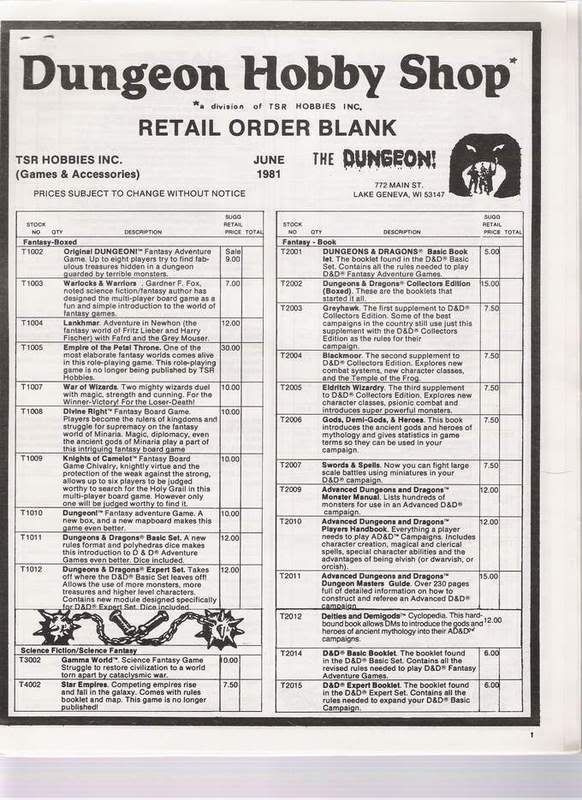With the reveal that the 5e PHB is likely to cost $50, there has been a lot of discussion on several threads about how much books cost, and what that means in terms of inflation. Since the data is getting scattered, and since I have most of it handy (and don't want to have to track it down again in another few months), I thought I'd gather it here.
For reference, the inflation calculator I've used is
here.
1st Edition: The Monster Manual was $9.95 in 1977 (Dragon 11). The PHB was published in 1978 (an advert appears in Dragon 18) but no price has been confirmed. The DMG was $15 in 1979 (Dragon 33, Sage Advice). This equates to $38.41 for the MM and $48.33 for the DMG today.
(My best guess for the PHB price would be $10, the same as the MM, which would be $35.88 today. This would give a total of approx $123 for the set. But please note that this is a
guess!)
2nd Ed: PHB $20, DMG $18, MC1 $18, 1989. Prices taken from the back covers of the book, except the MC which came from Dragon's Previews from that time. This equates to $37.73 + $33.96 + $33.96 = approx $106 today. (Note that this gives a fairly narrow selection of monsters. To get a set comparable to any other edition, albeit a little more than the 1st Ed MM, you would also need MC2, adding $15 ($28.30) to the price.)
2nd Ed "Black Cover": PHB $25, DMG $20, MM $25, 1995. Prices taken from back covers of the book, except the DMG which came from Dragon's Previews from that time. This equates to $38.37 + $30.70 + $38.37 = approx $108 today.
3e: PHB $30, DMG $30, MM $30, 2000. Prices are for the second printing onwards - the first printing was $20 each, but this was a nefarious plot by WotC to give us an especially good deal. This equates to 3 x $40.75 = approx $122 today.
3.5e: PHB, DMG, MM $30, 2003. Prices are taken from the back cover of the books. This equates to 3 x $38.14 = approx $116 today.
4e: PHB, DMG, MM $35, 2008. Prices are taken from the back cover of the books. This equates to 3 x $38.03 = approx $116 today.
Essentials: One of two "Heroes of..." books, $20, "DM's Kit" $40, and "Monster Vault", $30, 2010. That equates to $21.45 + $42.91 + £32.18 = approx $96.50 today. (Note, however, that this gives a very narrow selection of classes. To get a set comparable to any previous PHB you would need the second "Heroes of..." book, adding a further $20 to the cost.)
Just for completeness, and I know it's not really an edition of D&D:
Pathfinder: Core Rulebook $50, Bestiary $40, 2009. Prices are taken from the back cover of the books. This equates to $54.52 + $43.61 = approx $98 today.
Some notes:
- I don't really have any agenda here, except to share some facts. Well, that and to gather the information so I don't need to track it down again at some future time.

- I'm pretty sure those books are all priced as at release, so these figures should be accurate. It is, of course, possible I've made a mistake somewhere along the line.
- I haven't included the 1st Ed "orange spine" reprints here, because I don't have accurate data for those books.
I hope this is of at least a little use (or maybe interest) to someone!
(Edit: I've updated the 1st Ed values with my latest findings. I've also added Essentials to the list, and added caveats about the monster selection in 2nd Ed and the class selection in Essentials.)



